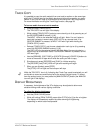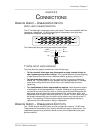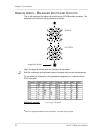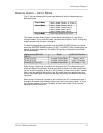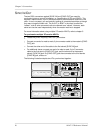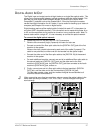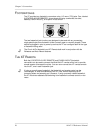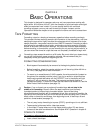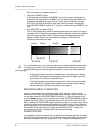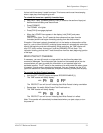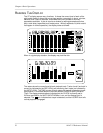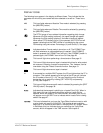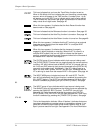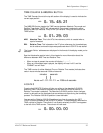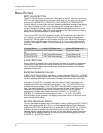
Basic Operations: Chapter 4
ADAT XT Reference Manual 29
CHAPTER 4
BASIC OPERATIONS
This chapter is designed for operators who may not have experience working with
digital audio. All functions of the XT (with the exception of synchronization and digital
audio) are explained here in detail. If you are already familiar with multitrack
recording concepts, you may not need to read this chapter. Instead, use the
Operational Reference
chapter to look up specific functions and how to access them.
TAPE FORMATTING
Formatting a tape is a simple yet necessary operation before recording can begin.
This process involves recording sample rate information in the data section, and time-
stamping the tape with a highly accurate time reference which, because of its single-
sample resolution, has greater resolution than SMPTE timecode. Formatting a tape is
what allows for accurate synchronization, autolocation and auto recording functions,
as well as accurate TIME counter readings. You can either format a tape completely
before recording, or format while you are recording for only as long as you need to, or
you can extend the format of a tape that was not completely formatted to begin with.
J
Formatting a tape erases the audio on all 8 tracks. Be sure to label your tapes clearly,
so you don’t accidentally erase something valuable. We recommend that you
completely format your tapes from beginning to end.
FORMATTING CONSIDERATIONS
• Blank tapes will automatically be rewound to the beginning before formatting.
• Before formatting, select the sample rate that you will be using (either 48 kHz or
44.1 kHz). See page 44 for more information.
• To record on or erase/format a S-VHS cassette, the write protect tab (located on
the spine of the cassette) must be intact. If you try to record on a tape that has
had the write protect tab broken off, the PROTECT
icon in the display will light
and the XT will not record on the tape. This prevents accidental erasure of
valuable recordings. To record on a tape that has had the tab broken off, use the
Write Protect Override feature (see page 31).
J
Caution:
If you re-format over a previously formatted tape, do not stop in the
middle of re-formatting. Reason: When the tape transitions from the newly-
formatted section to the previously formatted section, there will be timing
discontinuities and the audio will do unpleasant things. Also, during that transition the
tape will be non-functional and you will not be able to record anything over it. When in
doubt, either re-format the entire tape, from beginning to end, or back up a bit and
perform a format extend (see page 31).
• The only way to stop formatting is to press [STOP]—punching out is not sufficient.
• Tapes can be bulk-erased with a video tape eraser.
• In a multiple XT setup where one is the master and the other XTs are slaves,
there are a few other considerations. See
Multiple ADAT Operation
in chapter 6.
COMPLETE FORMAT
To format or reformat/erase an entire tape:
¿ Insert a fresh, blank tape.




